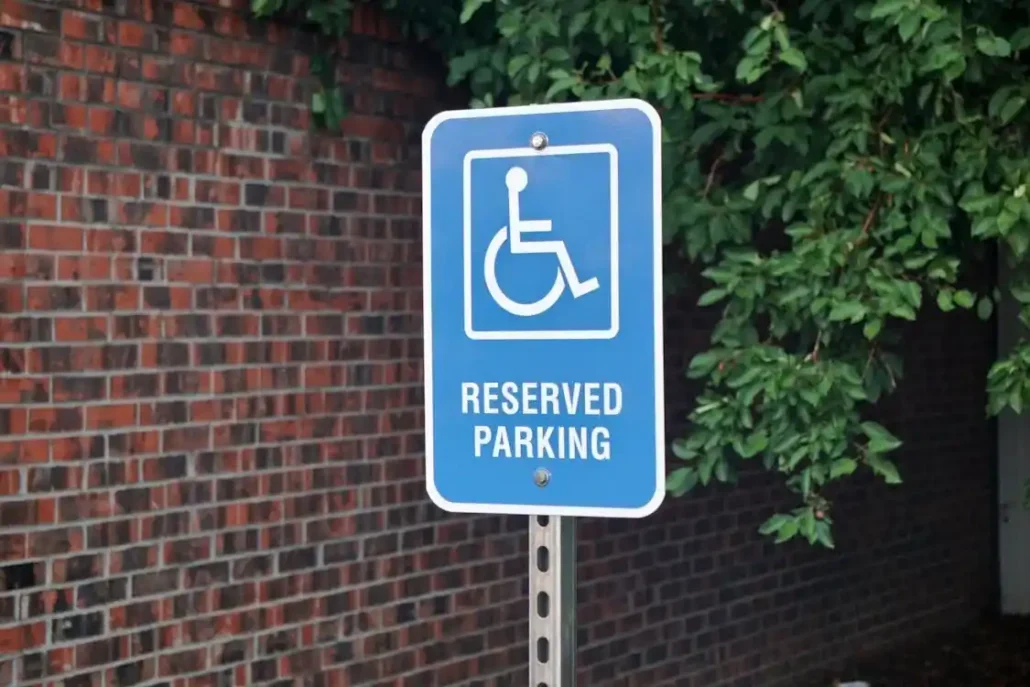Your signage exists to support the customer experience. This means that you need to make sure that you are best supporting all your customers, especially those who may be impacted by different physical and intellectual disabilities. Continue reading to learn more about how the ADA (the Americans with Disabilities Act) impacts signage regulations and how you can best ensure the full compliance of your signage.
For personalized advice, contact our team at Signworks today.
What is the ADA?
The Americans with Disabilities Act (ADA) is a comprehensive civil rights law enacted in 1990 to prohibit discrimination against individuals with disabilities in various areas of public life. It mandates equal access and opportunities in employment, public accommodations, transportation, telecommunications, and state and local government services.
The ADA ensures that people with disabilities have the same rights and opportunities as everyone else, requiring businesses and facilities to provide reasonable accommodations and accessibility modifications to ensure inclusion and participation for individuals with disabilities. This law has significantly improved accessibility standards across the United States, promoting fairness, dignity, and equal opportunities for all.
Why the ADA Matters for Signage
The ADA significantly impacts signage for businesses and public spaces by requiring them to adhere to specific guidelines to ensure accessibility for individuals with disabilities. Signage must comply with regulations regarding font type, size, and spacing to ensure readability for people with visual impairments. Additionally, signs must feature tactile characters and Braille translations to facilitate navigation for those who are blind or have low vision.
Furthermore, signage placement and mounting heights are regulated to ensure visibility and reach for individuals who use wheelchairs or have mobility impairments. Directional signage is crucial for guiding individuals with disabilities throughout the environment, ensuring they can access facilities, exits, restrooms, and other essential areas.
By adhering to ADA signage standards, businesses and public spaces ensure equal access and inclusion for all individuals, fostering a welcoming and accommodating environment. Compliance with ADA signage regulations not only demonstrates legal adherence but also reflects a commitment to accessibility and inclusivity, enhancing the overall experience for customers and visitors with disabilities.
Key ADA Regulations
ADA-compliant signage must adhere to several key regulations to ensure accessibility for individuals with disabilities. Compliance with these regulations ensures that signage is accessible to individuals with disabilities, promoting inclusivity and equal access in public spaces and businesses. These regulations include:
- High Color Contrast: Signs must have high color contrast between the text and background to improve readability for individuals with low vision or color blindness.
- Specific Fonts: Sans-serif fonts like Arial or Helvetica are recommended for signage as they are easier to read, especially for individuals with visual impairments.
- Braille Spacing and Sizes: Braille translations must be placed below corresponding text and should be Grade 2 Braille. The spacing between Braille dots and the size of the Braille characters must meet specific standards.
- Letter Sizes: The height of tactile characters on signs must be based on viewing distance to ensure readability. For example, characters on signs that will be read from a distance of 6 feet must be at least 3 inches tall.
- Character Spacing: Characters on signs must have adequate spacing between them to enhance readability, especially for individuals with visual impairments.
- Mounting Height and Location: Signs must be mounted at specific heights and locations to ensure they are easily reachable and visible for individuals using wheelchairs or mobility aids.
Best Practices for ADA-Compliant Signage
While the ADA provides specific regulations for signage to ensure accessibility for individuals with disabilities, some aspects may not be explicitly covered but are still crucial for creating supportive environments. Being mindful of lighting conditions is essential, as glare or poor lighting can hinder readability for people with visual impairments. Similarly, considering shadow contrast can enhance visibility and readability of signage.
Placing signage at eye level ensures that it is easily accessible and readable for individuals with varying heights or mobility limitations, including those who use wheelchairs or mobility aids. Additionally, providing clear pathways free of obstacles ensures that individuals with mobility impairments can approach and read signage comfortably.
Using simple language and concise messaging benefits individuals with cognitive disabilities or language barriers, ensuring that information is easily understood by all. By incorporating these considerate practices alongside ADA regulations, businesses and public spaces can create inclusive environments that cater to the diverse needs of all individuals.
Work With Experts to Avoid Mistakes
Many businesses unintentionally fail to adhere to ADA regulations due to a misunderstanding of the requirements. This can result in signage that is inaccessible to individuals with disabilities, leading to potential legal liabilities and excluding customers. Collaborating with a signage expert can help navigate the complexities of ADA compliance, ensuring that signage meets all necessary standards while also incorporating best practices for accessibility.
By leveraging the expertise of professionals, businesses can avoid costly mistakes and create inclusive environments that welcome all customers, reinforcing their commitment to accessibility and diversity.
Contact Signworks to Create Compliant and Effective Signage
By going the extra mile, you can have signage that isn’t just within disability guidelines but is comprehensively designed to support people who may need extra considerations. With the help of Signworks, you can ensure that your signage is fully compliant with ADA regulations and recommendations. Contact our team today to learn more about our services and how we can provide effective signage solutions.
